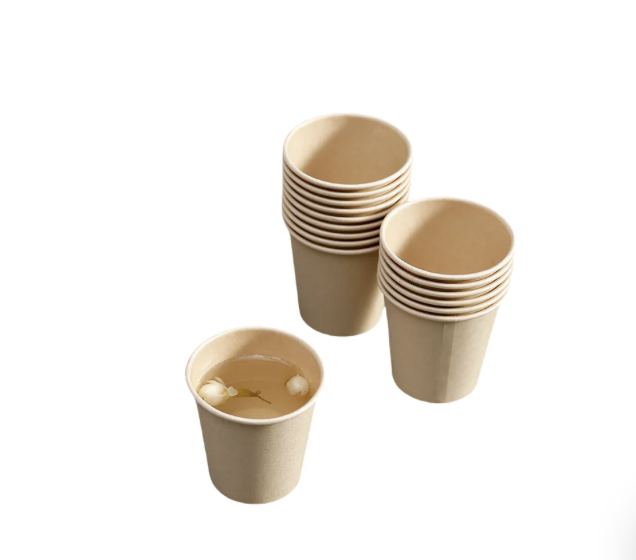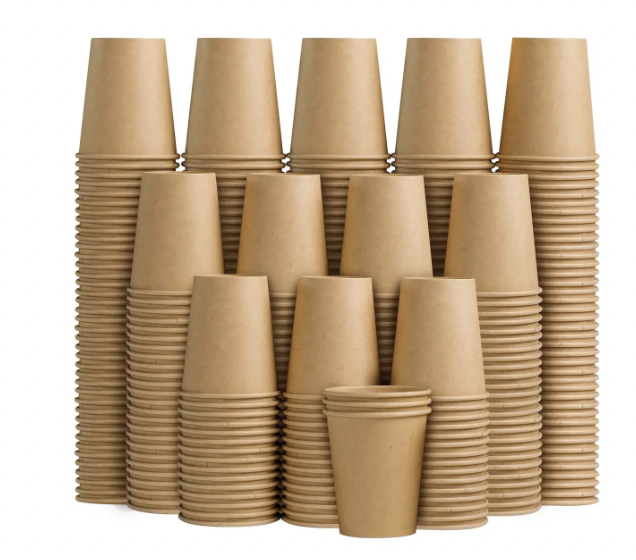The Evolution of Sustainable Food Service Packaging
In recent years, the food service industry has witnessed a remarkable transformation in packaging solutions, with paper cups emerging as a leading choice for environmentally conscious businesses and consumers. These versatile containers represent more than just vessels for beverages – they symbolize a significant step toward sustainable practices and reduced environmental impact. As global awareness of ecological challenges continues to grow, paper cups have become instrumental in reshaping how we think about disposable serviceware.
The journey of paper cups from simple convenience items to eco-friendly alternatives highlights the industry's response to mounting environmental concerns. These products now incorporate advanced manufacturing techniques and materials that significantly lower their ecological footprint while maintaining functionality. Understanding their role in environmental conservation requires examining their complete lifecycle, from production to disposal.

The Environmental Benefits of Modern Paper Cups
Renewable Resource Advantages
Paper cups derive from sustainably managed forests where trees are continuously replanted, creating a renewable resource cycle. Unlike petroleum-based alternatives, paper cups rely on materials that can be regenerated within a reasonable timeframe. Modern forestry practices ensure that for every tree harvested for paper cup production, multiple new ones are planted, maintaining forest health and biodiversity.
The production process of paper cups has evolved to minimize environmental impact through responsible sourcing practices. Many manufacturers now partner with forest certification programs to ensure their raw materials come from sustainably managed sources, providing transparency and accountability in the supply chain.
Biodegradability and Composting Potential
One of the most significant advantages of paper cups is their biodegradability. When properly disposed of, paper cups break down much faster than their plastic counterparts, reducing long-term environmental burden. Many modern paper cups are specifically designed for commercial composting facilities, where they can be transformed into nutrient-rich soil amendments.
Advanced coating technologies now allow paper cups to maintain their structural integrity while using minimal synthetic materials, further enhancing their environmental credentials. These innovations have led to cups that decompose more readily while still providing the necessary barrier properties for liquid containment.
Manufacturing Innovations and Sustainability
Energy-Efficient Production Methods
Contemporary paper cup manufacturing employs sophisticated technologies that significantly reduce energy consumption and waste. Modern facilities utilize renewable energy sources and implement heat recovery systems to minimize their carbon footprint. The production process has been streamlined to require less water and energy compared to traditional manufacturing methods.
These improvements in manufacturing efficiency not only benefit the environment but also make paper cups more economically viable for businesses. The reduced resource consumption translates to cost savings that can be passed on to consumers while maintaining environmental benefits.
Innovative Material Technologies
Recent advances in material science have revolutionized paper cup design. New barrier coatings derived from plant-based materials provide excellent liquid resistance while maintaining the cup's recyclability. These innovations address historical challenges regarding the separation of materials during recycling processes.
Manufacturers continue to explore alternative materials and coating technologies that further reduce environmental impact without compromising performance. These developments include bio-based barriers and enhanced recyclability features that make paper cups increasingly sustainable.
Economic and Social Impact of Paper Cup Adoption
Business Benefits and Market Response
Companies switching to paper cups often experience positive customer feedback and improved brand perception. Consumers increasingly favor businesses that demonstrate environmental responsibility, making paper cups a strategic choice for customer retention and acquisition. The transition also helps businesses comply with emerging environmental regulations and avoid potential penalties associated with less sustainable alternatives.
Market research indicates that environmentally conscious packaging influences purchasing decisions, particularly among younger demographics. This trend has encouraged more businesses to adopt paper cups as part of their sustainability initiatives, creating a positive feedback loop in the industry.
Community Impact and Education
The widespread adoption of paper cups has catalyzed broader environmental awareness in communities. Many organizations use their transition to paper cups as an opportunity to educate customers about environmental responsibility and proper disposal practices. This educational component helps build lasting behavioral changes that extend beyond cup usage.
Local recycling programs have also evolved to better handle paper cups, creating new job opportunities and strengthening community recycling infrastructure. These developments demonstrate how paper cup adoption can drive positive changes throughout the entire waste management ecosystem.
Future Outlook and Continuous Innovation
Emerging Technologies and Materials
Research continues into next-generation materials that could make paper cups even more environmentally friendly. Scientists are developing new coating materials that could eliminate the need for synthetic barriers altogether while maintaining performance standards. These innovations promise to further reduce the environmental impact of paper cups.
Artificial intelligence and machine learning are being applied to optimize production processes and material usage, potentially leading to even more sustainable manufacturing methods. These technological advances suggest that paper cups will become increasingly eco-friendly in the future.
Global Standards and Regulations
International environmental standards for food service packaging continue to evolve, with paper cups often setting the benchmark for sustainability. Industry leaders are working with regulatory bodies to develop comprehensive guidelines that promote environmental responsibility while ensuring product safety and functionality.
These developing standards are expected to further drive innovation in paper cup design and manufacturing, potentially leading to new breakthroughs in sustainable packaging solutions.
Frequently Asked Questions
Are paper cups really better for the environment than plastic cups?
Paper cups generally have a lower environmental impact than plastic cups due to their biodegradability and renewable resource base. When sourced from sustainably managed forests and properly disposed of, they contribute less to long-term environmental pollution and require fewer fossil fuel resources for production.
How long does it take for a paper cup to decompose?
The decomposition time for paper cups varies depending on conditions and disposal method. In commercial composting facilities, paper cups can break down within 2-6 months. In natural environments, they typically decompose significantly faster than plastic alternatives, though exact timing depends on environmental factors and cup coating type.
What happens to the protective coating in paper cups during recycling?
Modern recycling facilities can effectively separate protective coatings from paper fibers during the recycling process. Many newer paper cups use innovative barrier materials specifically designed to separate easily during recycling, allowing the paper component to be recovered and reused in other products.
